Chickpeas – a form of legume similar to red or black beans – are circular seeds originating from countries like Turkey and France from times as far back as 3500 BCE1. Marketed as either soaked and canned in aquafaba (an excellent cooking ingredient), or in their raw dry form, Chickpeas have a multitude of uses that warrant purchasing them in large quantities. However, unlike other produce, once cooked, chickpeas develop microorganism cultures rapidly.
Once cooked, chickpeas will only last a miniscule two to three hours2 outside of a cooled area, owing to their extremely high protein content and water retention induced by their particular mode of cooking. In a fridge, they will last three to five days as long as proper storage procedures are followed. Because of this, freezing chickpeas is recommended in order to store them for long periods of time. Frozen chickpeas will last up to six months so long as they are not defrosted or otherwise compromised during that time.
Can You Freeze Chickpeas?
In short, yes, you can freeze chickpeas.
However, due to the macronutrient profile of chickpeas (protein content) as well as their form of cooking provides the perfect breeding ground for all sorts of microorganism cultures to develop within a matter of hours, especially if freshly cooked.
Chickpeas, if not stored immediately, should be consumed shortly after cooking. With a moisture content of up to fourteen percent3, chickpeas are minimally affected texture-wise by the freezing process.
Equipment Needed for Freezing Chickpeas
Once your chickpeas have been properly cooked, all that is needed is a suitable air-tight container, several paper tissues or cloths and a freezer capable of reaching freezing temperatures. Optionally, a baking pan or plastic resealable pouch can also be used for the first round of freezing.
Drying Your Chickpeas
After cooking your chickpeas and producing a proper container, place the cooked chickpeas on a paper towel and allow the air to evaporate any of the excess water from cooking for several minutes, ensuring that the maximum amount of moisture has been leeched from the surfaces of the chickpeas. This is to ensure that ice crystals will not form between the chickpeas as well as to extend their shelf-life by reducing any opportunity for microorganisms to develop.
Preventing Clumped Chickpeas
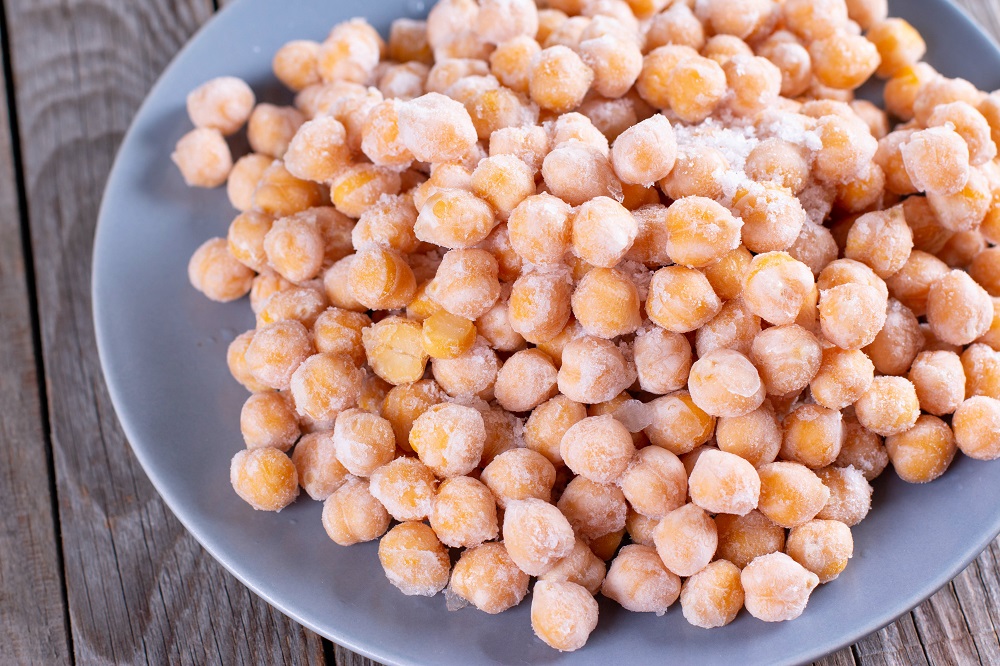
As previously mentioned, ice crystals may form if water is present between two seeds of chickpeas within the freezer. The procedure to avoid this eventuality is to first freeze the chickpeas by placing them flat in a resealable plastic pouch or baking sheet. Ensure that no two chickpeas are touching and that they are spread evenly throughout the pouch or sheet.
Storing the Chickpeas
Once your chickpeas have been dried as much as possible, simply place them within your air-tight container and ensure that no excess moisture is present within the container. Separating the chickpeas into multiple batches is an ideal strategy to allow reheating of needed amounts without compromising the entirety of your chickpea stock.
Ensure that no other produce is stored within the same air-tight container as the chickpeas, as this produce may have colonies of microorganisms or certain enzymes that hasten the spoilage of your chickpeas.
How to Properly Reheat your Chickpeas
Owing to their high protein content, chickpeas are surprisingly sturdy when faced with normally texture or flavor altering environments. If time is of the essence, simply defrosting them in the microwave utilizing the defrost setting should be more than sufficient. While chickpeas are sturdy, this will still compromise the texture somewhat.
In order to best defrost chickpeas, place your desired amount in the fridge to thaw overnight.
How Long do Thawed Chickpeas Last Out of the Freezer?
Shortly after freezing and then subsequently thawing your chickpeas, they will begin to spoil. In approximately three to four days, they will begin to show signs of decomposition. These usually come in the form of discoloration, an unpalatable taste, or unpleasant smells. Dispose of your chickpeas immediately should you notice any of these signs.
Is Preventing Clumping Necessary?
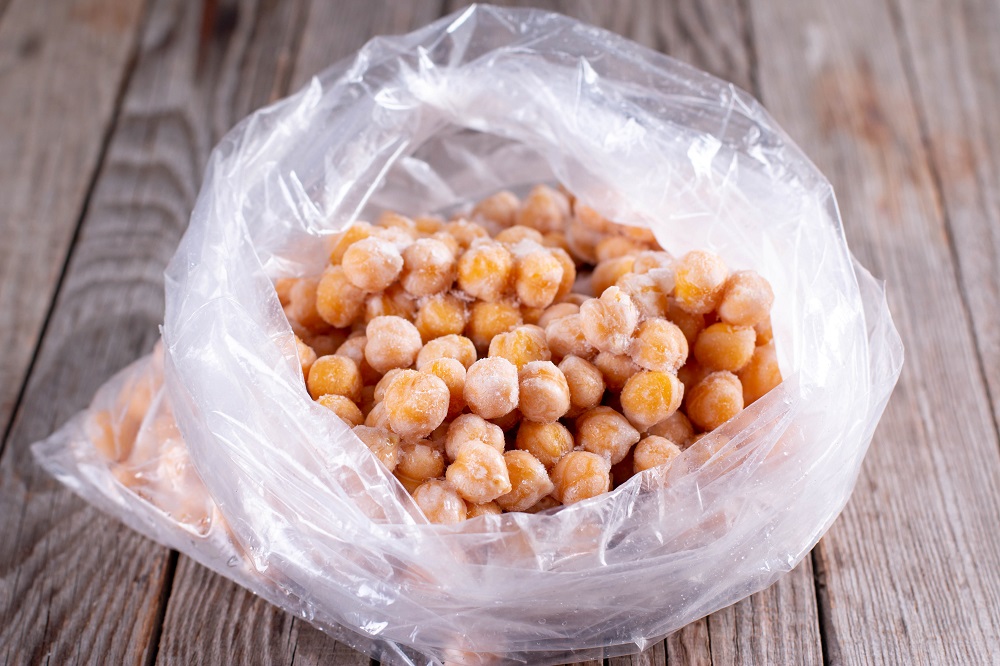
While large chains of interconnected frozen chickpeas makes thawing difficult and decreases their shelf-life, choosing to spread them on a sheet or in a plastic pouch is entirely optional. We recommend drying your chickpeas at the very least to reduce the chance of this particular problem from occurring.
Does Freezing Chickpeas Affect their Taste or Texture?
Not at all in fact, as chickpeas have relatively low internal moisture within its unique cellular structures. This means that the act of freezing causes minimal damage to the general texture and flavor of the seeds.
While this is true, it is often the reheating procedure that will affect the flavor and texture of your chickpeas. For an optimal defrosting, follow the above procedure wherein they are placed in the fridge overnight.
Things to Keep in Mind
While chickpeas hold up well to the process of freezing after cooking, it is still ideal to leave them within their can or in their dried form if you wish to keep them for longer periods than six months.
Keep in mind that the act of freezing simply slows down enzymatic action, not stop it entirely. It is still possible for food to spoil while in the freezer, especially if previously allowed to be colonized by microorganisms prior to freezing.
References:
1. Mukanti AK, Gaur PM, Gowda CL, Chibbar RN. (August 2012) Nutritional quality and health benefits of chickpea (Cicer arietinum L.): a review. British Journal of Nutrition
2. Utah State University (June 2014) Cooking with Food Storage ingredients – Dry Beans
http://extension.usu.edu/juab/files/uploads/FSNE/drybeans_plus.pdf
3. U.S. Department of Agriculture (September 2008) Composition of Foods Raw, Processed, Prepared USDA National Nutrient Database for Standard

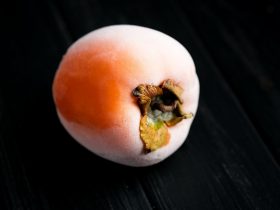
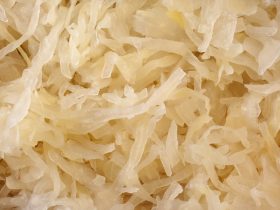
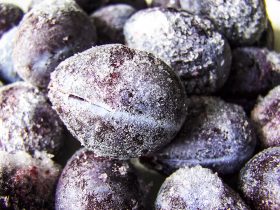
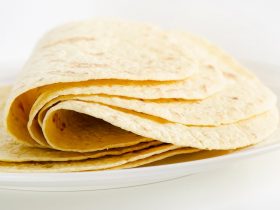
Hi, I'm Dom
Dom Eats was started to help other people fall in love with food. While cooking can feel intimidating, it doesn't have to be.